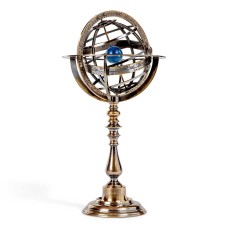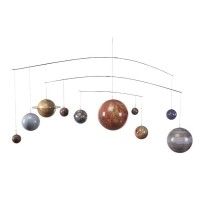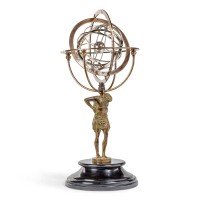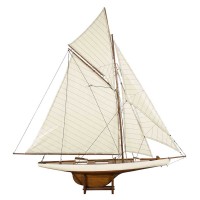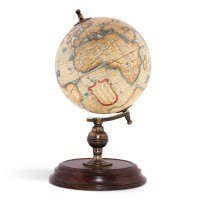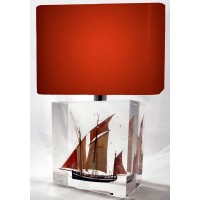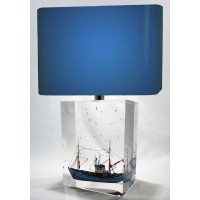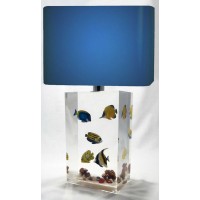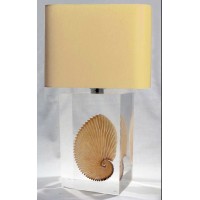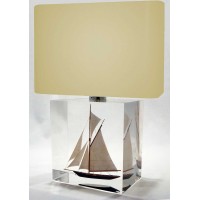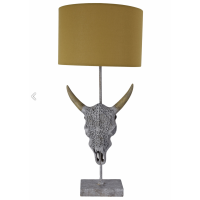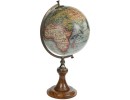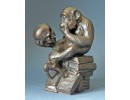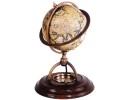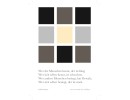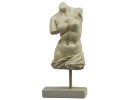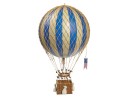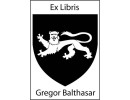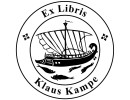Armillary sphere diagram after Copernicus.
♥ Bronce armillary diagram. The exterior parts of this machine are a compages [or framework] of brass rings, which represent the principal circles of the heavens. Early man, looking at the heavens, believed the stars were fixed to the inside surface of a rotating sphere. Copernicus gave his name to the theory of an Earth-centered universe, and the Vatican propagated his belief by threatening to burn science heretics at the stake for stating otherwise. We now know that we live on the fringe of a nearly infinite and ever expanding universe. Armillary dials have the earth positioned inside a mesh of bronze hoops, symbolizing the course of the planets as known at the time. The course of the sun is shown by a wide band called the ecliptic circle.
2. The ecliptic B, which is divided into 12 signs, and each sign into 30 degrees, and also into the months and days of the year; in such a manner, that the degree or point of the ecliptic in which the sun is, on any given day, stands over that day in the circle of months.
3. The tropic of Cancer C, touching the ecliptic at the beginning of Cancer in e, and the tropic of Capricorn D, touching the ecliptic at the beginning of Capricorn in f; each 23½ degrees from the equinoctial circle.
4. The Arctic Circle E, and the Antarctic Circle F, each 23½ degrees from its respective pole at N and S.
5. The equinoctial colure G, passing through the north and south poles of the heaven at N and S, and through the equinoctial points Aries and Libra, in the ecliptic.
6. The solstitial colure H, passing through the poles of the heaven, and through the solstitial points Cancer and Capricorn, in the ecliptic. Each quarter of the former of these colures is divided into 90 degrees, from the equinoctial to the poles of the world, for showing the declination of the sun, moon, and stars; and each quarter of the latter, from the ecliptic as e and f, to its poles b and d, for showing the latitude of the stars.
Size: H: 7.5 cm, diameter: 14.5 inch
Color: Bronze/ Polished Black Base
Ähnliche Produkte
Solar System Planet Mobile
Planet model as mobile ♥ A fascinating planet model of our solar system demonstrates..
120,00€ * Netto 100,84€
Globe with Compass after Robert de Vaugondy
Globe with Compass ♥ Our Globus "compass" shows a mapping from the time of the 18th Centu..
98,00€ * Netto 82,35€
Planetary Model and Atlas, 18th C. Atlas Armillary
♥ Titan Atlas and Planetary Model Armillary Spheres - Atlas supports the firmamentAtlas was on..
490,00€ * Netto 411,76€
Sailing Yacht America's Cup Columbia 1901, Medium
Sailing Yacht America's Cup Columbia 1901, sailing ship Medium ♥ Our sailing yacht Columb..
290,00€ * Netto 243,70€
Lamp, hanging lamp, admiralty lamp
Hanging lamp, admiralty lamp ♥ Here you can find our historical classic hanging lamp Admi..
779,00€ * Netto 654,62€
Globe
Table Globe ♥ Our student globe features a cartography from the 16th century period, made..
98,00€ * Netto 82,35€
Table lamp sailing ship fishing boat
Floor lamp sail fishing boat sardine ship ♥ Our model sailing fishing boat is cast in an ..
1.390,00€ * Netto 1.168,07€
Sailor fishing boat table lamp
Fish trawler floor lamp in Plexiglass ♥ Our model fishing trawler is cast in an acrylic b..
890,00€ * Netto 747,90€
Table lamp fish in acrylic block
Table lamp fish in plexiglass ♥ Our Pisces model is cast in an acrylic block and has a bl..
990,00€ * Netto 831,93€
Table lamp fish in acrylic block
Lamp with shell in plexiglass ♥ Our shell model is cast in an acrylic block and has a bei..
990,00€ * Netto 831,93€
Table lamp sailing ship in acrylic block
Sailing ship floor lamp in plexiglass ♥ Our Pisces model is cast in an acrylic block and ..
990,00€ * Netto 831,93€
Table lamp Bull's head Cattle skull Bull's skull
Table lamp bull skull 70cm bull head lamp cattle skull table lamp 70cm ♥ TABLE LAMP “BULL..
34,50€ * Netto 28,99€
Schnellsuche universe, planet, planets, orbit, astrology, astrononomie, copernicus, ecliptic, armillary, sphere

